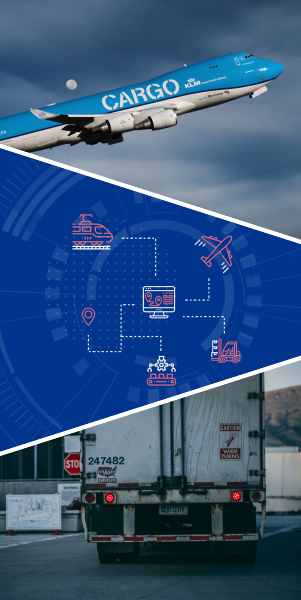Municipal transport
Smarter transport, from passenger apps to fleet operations
Asset management and operational monitoring
Proactive control over your fleet's location, health, and routing
POI-based solutions
High-accuracy POI databases for intelligent transportation systems
Intermodal transportation scenario modeling
Dynamic modeling for intermodal risk assessment and route optimization
Indoor navigation and inspection
Mastering transport hubs with smart navigation and automated inspection
Hardware integration
Seamlessly connecting vehicle hardware to your software and cloud platforms

Municipal transport
- Mobile applications for passengers (contactless ticketing systems development, real-time monitoring of transport arrival at stops).
- Network planning for new types of services (municipal bike-sharing, scooter-sharing, etc)
- Dispatch planning for repair teams
- Solutions for quick vehicle inspections before deployment on routes
Approaches
Contactless Ticketing systems development
- Card-Based Systems (NFS-enabled cards, RFID tags)
- Mobile-Based Systems (QR code, NFC-enabled smartphones, or digital wallets)
- Account-Based Ticketing
- Integration with the transport infrastructure
- Data security
Municipal Transport Network Planning
- Data-Driven Decision Making
- Multi-Modal Integration
- Accessibility Optimization
- Sustainability
- Simulation and Scenario Testing
Path Planning for Municipal Transport Repair Teams
- Route Optimization
- Priority-Based Scheduling
- Predictive Analytics
- Real-Time Decision Making
Computer Vision-Based Quick Security Check of Municipal Transport
- Anomaly Detection
- Condition Monitoring
- Automation and Real-Time Processing
Communication
Contactless Ticketing systems development
- Near-Field Communication (NFC)
- Bluetooth Low Energy (BLE)
Municipal Transport Network Planning
- GTFS
- GBFS
Path Planning for Municipal Transport Repair Teams
- GTFS-RT
- NMEA
Computer Vision-Based Quick Security Check of Municipal Transport
- gRPC
- ONNX Runtime Protocols
Data Types
Contactless Ticketing systems development
- User Data
- Card or Token Data
- Transaction Data
- Location Data
Municipal Transport Network Planning/ Path Planning for Municipal Transport Repair Teams
- Geospatial
- Demographic
- Traffic Data
- Environmental Data
- Operational Data
Computer Vision-Based Quick Security Check of Municipal Transport
- Visual Data
- Sensor Data
- Metadata
Technologies
Contactless Ticketing systems development
- Libnfc
- Android NFC APIs
- ZXing (Zebra Crossing)
- OpenCV
Municipal Transport Network Planning/ Path Planning for Municipal Transport Repair Teams
- ArcGIS
- QGIS
- OSRM (Open Source Routing Machine)
- pgRouting
- SUMO (Simulation of Urban Mobility)
Computer Vision-Based Quick Security Check of Municipal Transport
- OpenCV
- TensorFlow/Keras
- PyTorch
- YOLO (You Only Look Once)
Asset management and operational monitoring
- Asset tracking solutions
- Predictive maintenance solutions
- Navigational solutions with real-time root recalculation, based on the specific factors
- Driver assistance applications
POI-based solutions
- POI database creation: data collection and validation
- POI-based navigation and route optimization
- Indoor POI (and Area Of Interest) database creation (for malls, airports, expo centers, etc)
- Delivery routing and POI-based service optimization
- POI data integration into urban transportation systems
Approaches
- Remote and field data collection (up to 80% can be collected remotely)
- Call centers creation and automated solutions development for POI data validation
- Ground truth teams creation for data collection and validation services around the world
- Advanced geospatial analytics for zoning space of further interaction with POIs
- Software solutions development based on custom POI databases
Data Types
- Geospatial
- Attribute
- Temporal
- Real-time
- User-interaction
Technologies
- ArcGIS
- QGIS
- GeoPandas
- Leaflet.gs
- OSRM
- GraphHopper
- Kepler.gl
- Plotly
Intermodal transportation scenario modeling
- Transportation scenario modeling based on the infrastructure databases (ports, warehouses, transport types), available for the client
- Transit-related border and customs requirements updates control in predefined countries
- Real-time solutions for waiting time estimation (for border control, port entering, etc)
- Operational scenarios modeling, proposed alternative path in case of drastic changes on the way (strikes, natural disasters, etc)
- Integration with big transportation analytics platforms
Approaches
- Agent-based modeling (ABM) – simulation of traveler and freight behaviors.
- “What-if” scenario evaluation (disruptions, policy changes, or infrastructure developments).
- Discrete-event simulation (DES) and traffic microsimulation – modeling and granular control inside of transportation nodes (e.g., ports, stations).
- Multi-Criteria Decision Analysis (MCDA)
Data Types
- Transportation network
- Costs
- Operational
- Restrictions and policies
Technologies
Simulation and Modeling
- MATSim
- AnyLogic
- PTV Visum/ Vissim
Geospatial and Network Analysis
- NetworkX
- Geopandas
- OSMNX
- Optimization Libraries
- PuLP
- Gurobi
Integration Experience
- Oracle Global Trade Management Cloud
- SAP GTS
- PartnerLinQ
- Zonos
- Descartes Datamyne
- SAP TM
- MercuryGate
- Descartes Aljex
- Shipsy
- GoComet
Indoor navigation and inspection
- Precise location tracking and navigation solutions in transportation hubs
- Geofencing functionality
- Solutions for inspection tasks automation within transportation facilities
Approaches
Indoor Navigation
- Wi-Fi Fingerprinting:
- Bluetooth Low Energy (BLE) Beacons
- Ultra-Wideband
- Simultaneous Localization and Mapping (SLAM)
- Augmented Reality (AR) Navigation
Indoor Inspection
- Computer Vision-Based Systems
- Communication with IoT Sensors
Data Types
- Positional Data
- Map Data
- Sensor Data
- Inspection-related Data
- User Data
Technologies
Indoor Navigation Libraries
- IndoorAtlas
- Mapbox Indoor SDK
- HERE Indoor Positioning
Mapping and Geospatial Libraries
- Leaflet
- CesiumJS
- OpenLayers
Hardware integration
Vehicle Telematics Integration
- Integration of onboard diagnostics (OBD-II) and CAN bus data into centralized fleet management systems
- Connecting GPS and accelerometer sensors for location tracking and behavior analysis.
- Integration with Electronic Logging Devices (ELDs) for regulatory compliance.
- Data aggregation from telematics control units (TCUs) into cloud-based systems for analysis.
Autonomous Vehicle Hardware Integration
- Integrating LIDAR, radar, and camera systems for perception and obstacle detection.
- Connecting GPS and IMU (Inertial Measurement Units) for precise localization.
- Testing and calibration of sensor arrays for accurate data capture.



